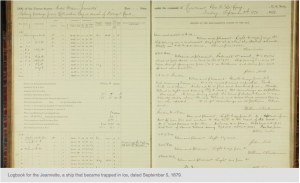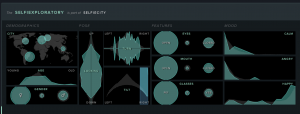As a group, working on this project has allowed for us to develop a research question about the role of the congregation and if the Moravian people perceived it in a positive or negative way. From what I could understand about these memoirs, the congregation offered hope and reconciliation with their faith.
The portion that I transcribed from the Henry Unger memoir was told from the third person point of view and talked about his journey to find mercy and forgiveness from his savior and congregation. It was described as finding “Rest for his poor Soul.” In the second memoir that I assisted in transcribing, Anna Elizabeth Rauch, it talked about her sharing how sinners can seek forgiveness to “Negroes” in Mesopotamia. She struggled with her health, but felt that she was visited by the Lord and needed to spread his word to the rest of the people of Mesopotamia. Lastly, the Rosine Tanneberger memoir talked about her life and journey to find “rest for her poor soul” as well. All three of these memoirs spoke of their religion as a means of solving underlying issues.

When all of our memoirs were entered into the Voyant Tools website, I was able to explore this research through the digital humanities approach. There were numerous key terms brought to my attention that assisted in the answering of this research question. I was able to see how often the words “Heart,” “Year,” “Came,” “Dear,” “Saviour,” and “Congregation” were present in the Bethlehem memoirs. With this website, we could also explore how the words were used in relation to other words. Also, it put the most commonly used words into a visual of a graph that determined trends amongst the words. We compared our memoir to the Latrobe memoirs and found that their most frequently used words were “Lord,” “Dear,” “God,” “Saviour,” and “Let.”

This was more helpful, compared to the traditional humanistic means, because the viewer is using distant reading. As Whitley describes it, distant reading uses specific data like quantitative and qualitative information to create a visual representation of what is read. This is a different form of reading and offers the analyzation of textual data. To quote Whitley “…the virtue of information visualization is that it can make complex data sets more accessible than they might otherwise be, whereas literary close readings often reveal that apparently straight forward texts are more complex than they might otherwise seem” (pg. 188).

The use of Voyant Tools allowed me to visualize the most commonly used terms and actually see how important religion was in the lives of the Moravian people. When I was working on this assignment, originally, I hadn’t paid attention to what I was reading. When I was finished transcribing I read over the material and struggled to find context in the sentences. From the Whitley reading we did for class I learned that many of the tools can pull out words that we don’t necessarily recognize while we are reading, specifically words that we tend to skip over. This was made evident after I entered the memoirs into Voyant because it became clear to me how often they spoke of their religion and how positively their “Savior” was represented.
Olivia Smith is a student at Bucknell University in Lewisburg, Pennsylvania. She was born and raised in Manasquan, New Jersey. She is currently apart of the Bucknell Women’s Rowing Team and plans to major in Psychology and Creative Writing.



